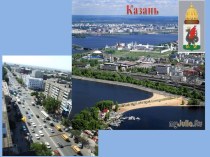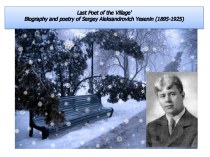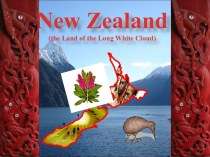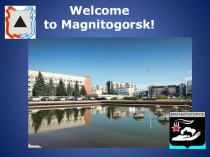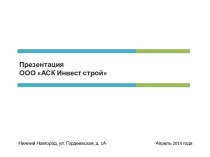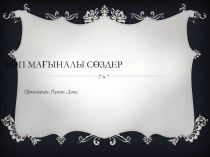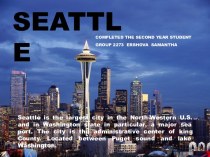- Главная
- Разное
- Бизнес и предпринимательство
- Образование
- Развлечения
- Государство
- Спорт
- Графика
- Культурология
- Еда и кулинария
- Лингвистика
- Религиоведение
- Черчение
- Физкультура
- ИЗО
- Психология
- Социология
- Английский язык
- Астрономия
- Алгебра
- Биология
- География
- Геометрия
- Детские презентации
- Информатика
- История
- Литература
- Маркетинг
- Математика
- Медицина
- Менеджмент
- Музыка
- МХК
- Немецкий язык
- ОБЖ
- Обществознание
- Окружающий мир
- Педагогика
- Русский язык
- Технология
- Физика
- Философия
- Химия
- Шаблоны, картинки для презентаций
- Экология
- Экономика
- Юриспруденция
Что такое findslide.org?
FindSlide.org - это сайт презентаций, докладов, шаблонов в формате PowerPoint.
Обратная связь
Email: Нажмите что бы посмотреть
Презентация на тему к уроку лингвострановедения по английскому языку Архитектурные достопримечательности Санкт - Петербурга
Содержание
- 2. In the north-western
- 3. The State Hermitage –is the main art
- 4. Admiralty – is a complex of buildings,
- 5. Alexander Column was erected
- 6. Built (designed by architect D. Trezzini) on
- 7. Kazan Cathedral – is
- 8. Saint Isaac's Cathedral
- 9. Church of the Savior on the Blood
- 10. Bronze Horseman – is a monument to
- 11. Tsarskoye Selo – is one of the
- 12. The ensemble of palaces
- 13. Скачать презентацию
- 14. Похожие презентации
In the north-western edge of Russia, in the place of the confluence of the Neva River in the Gulf of Finland, proudly founded by Peter the Great in 1703, there is the
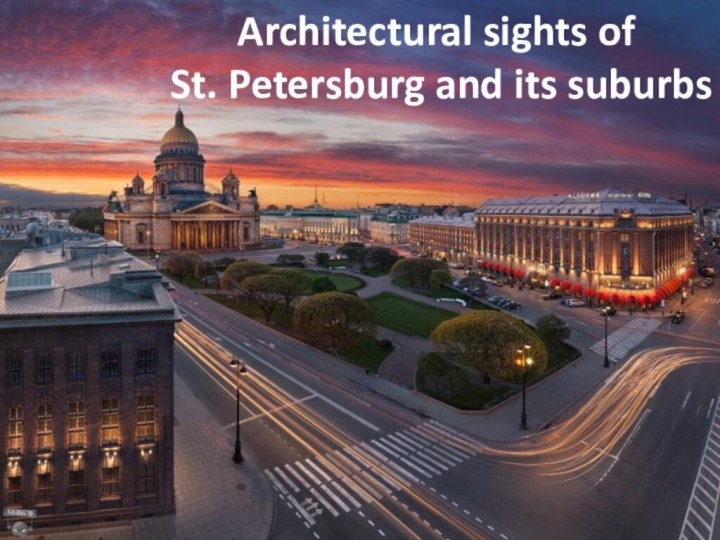
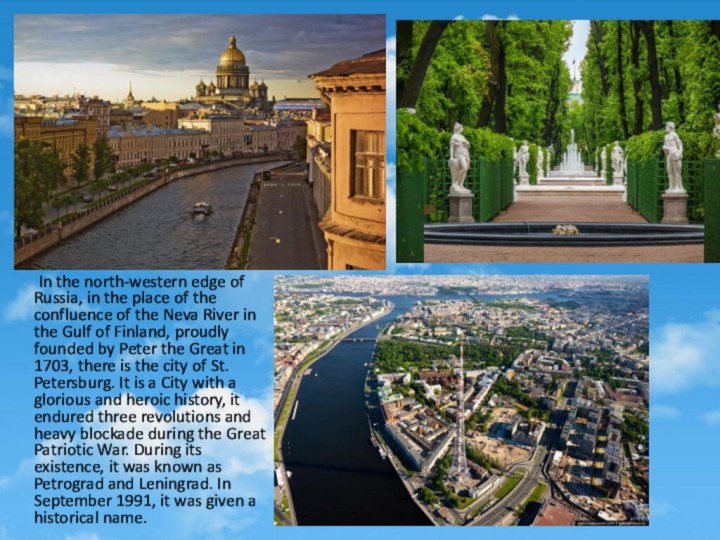
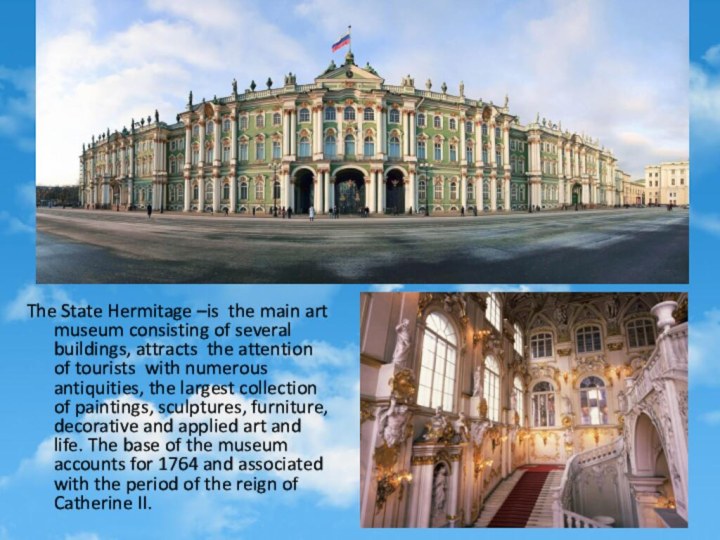
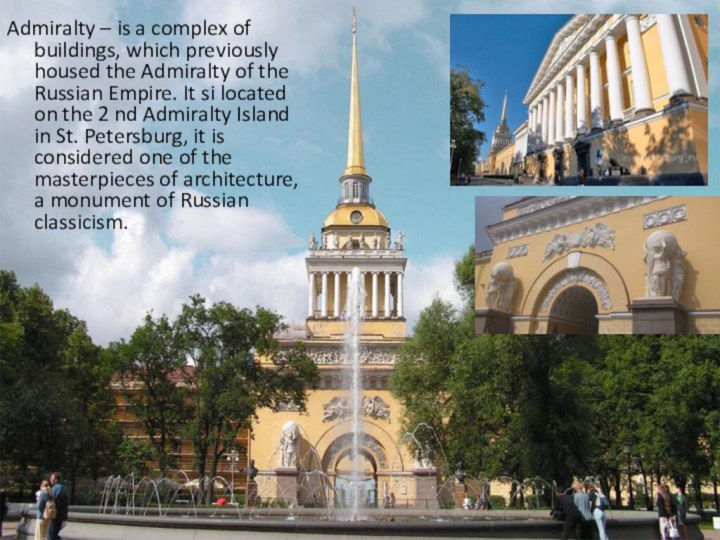
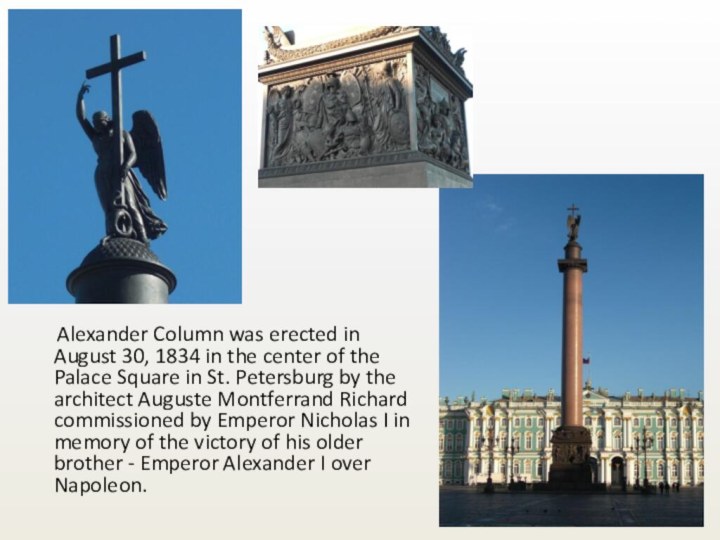
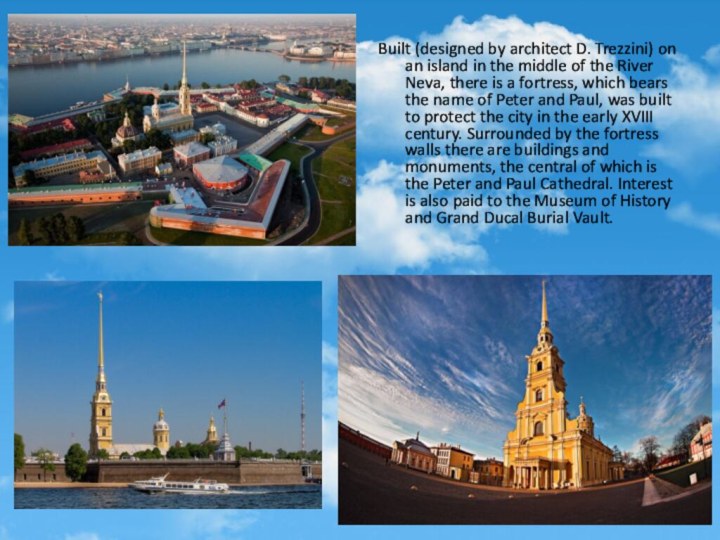
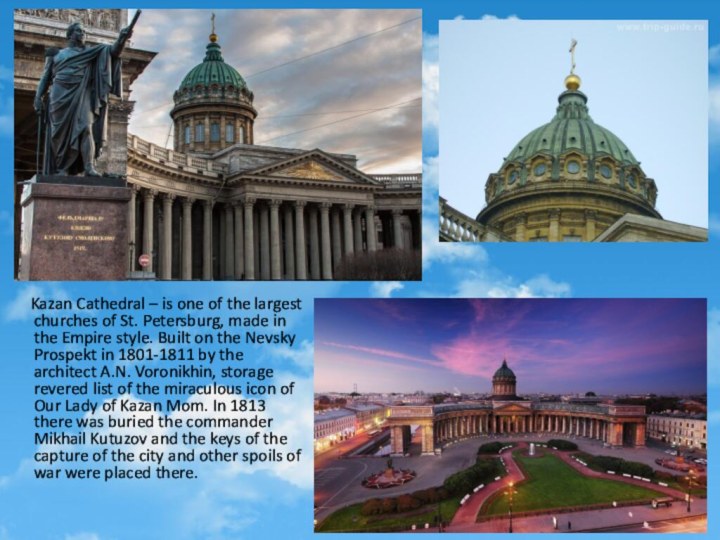
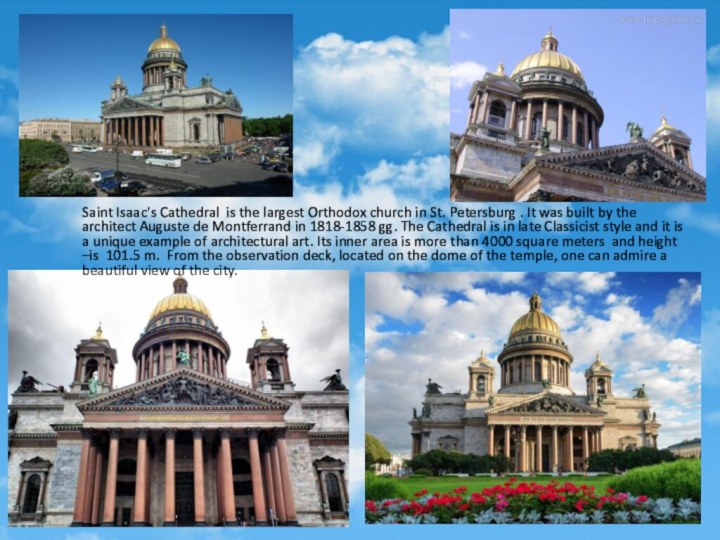
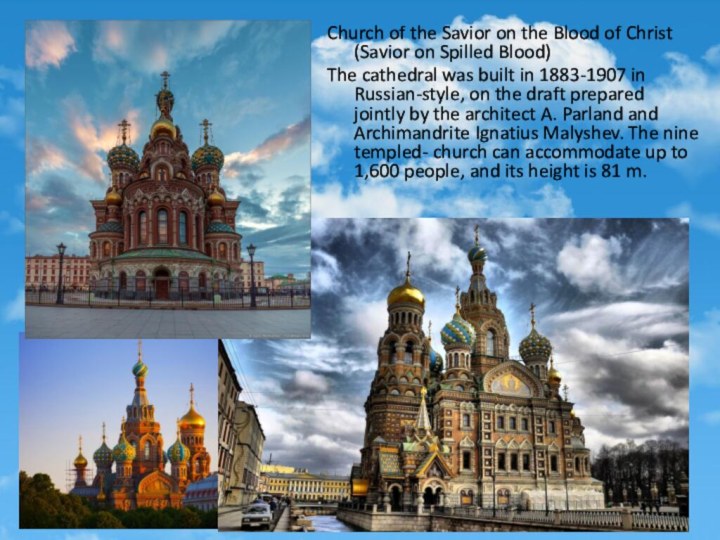
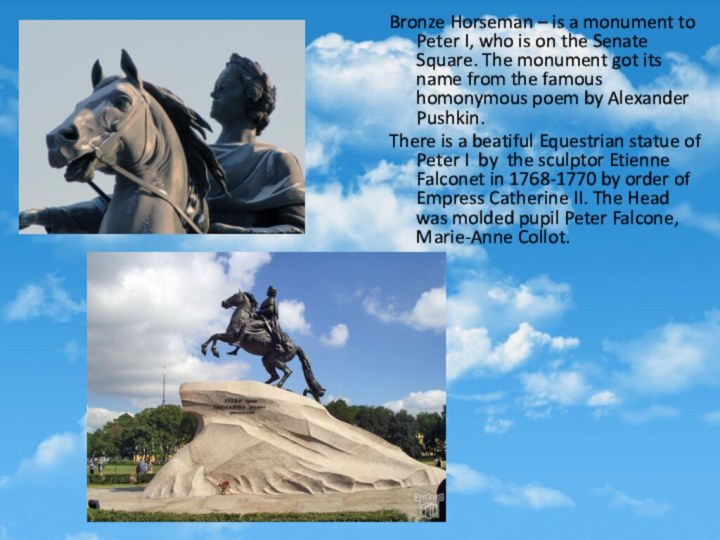
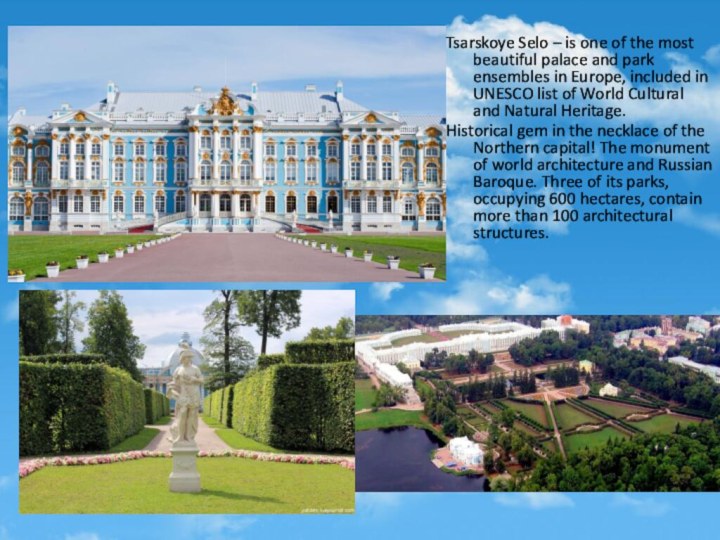
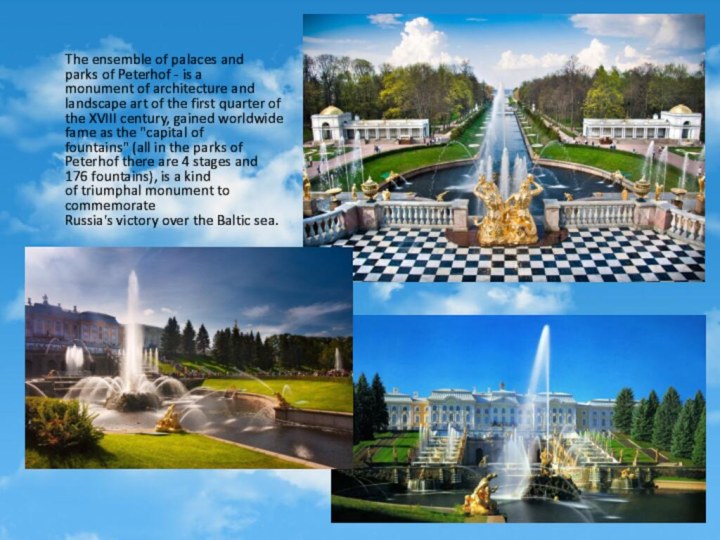
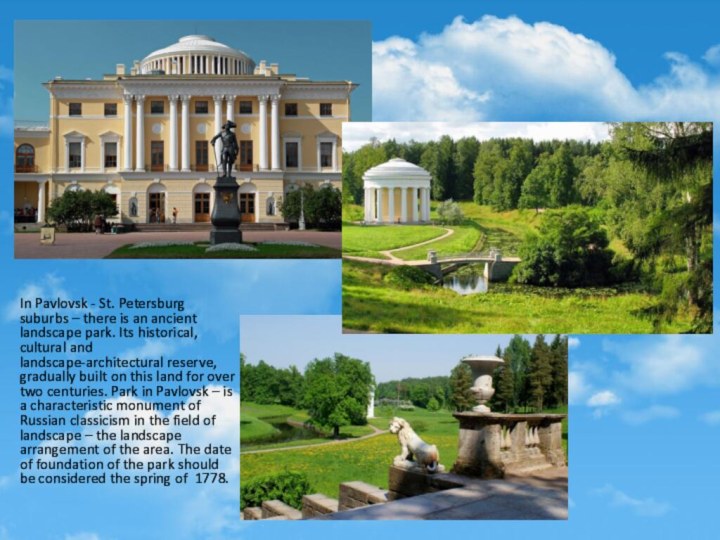
Слайд 3 The State Hermitage –is the main art museum
consisting of several buildings, attracts the attention of tourists
with numerous antiquities, the largest collection of paintings, sculptures, furniture, decorative and applied art and life. The base of the museum accounts for 1764 and associated with the period of the reign of Catherine II.Слайд 4 Admiralty – is a complex of buildings, which
previously housed the Admiralty of the Russian Empire. It
si located on the 2 nd Admiralty Island in St. Petersburg, it is considered one of the masterpieces of architecture, a monument of Russian classicism.Слайд 5 Alexander Column was erected in
August 30, 1834 in the center of the Palace
Square in St. Petersburg by the architect Auguste Montferrand Richard commissioned by Emperor Nicholas I in memory of the victory of his older brother - Emperor Alexander I over Napoleon.Слайд 6 Built (designed by architect D. Trezzini) on an
island in the middle of the River Neva, there
is a fortress, which bears the name of Peter and Paul, was built to protect the city in the early XVIII century. Surrounded by the fortress walls there are buildings and monuments, the central of which is the Peter and Paul Cathedral. Interest is also paid to the Museum of History and Grand Ducal Burial Vault.Слайд 7 Kazan Cathedral – is one
of the largest churches of St. Petersburg, made in
the Empire style. Built on the Nevsky Prospekt in 1801-1811 by the architect A.N. Voronikhin, storage revered list of the miraculous icon of Our Lady of Kazan Mom. In 1813 there was buried the commander Mikhail Kutuzov and the keys of the capture of the city and other spoils of war were placed there.Слайд 8 Saint Isaac's Cathedral is
the largest Orthodox church in St. Petersburg . It
was built by the architect Auguste de Montferrand in 1818-1858 gg. The Cathedral is in late Classicist style and it is a unique example of architectural art. Its inner area is more than 4000 square meters and height –is 101.5 m. From the observation deck, located on the dome of the temple, one can admire a beautiful view of the city.Слайд 9 Church of the Savior on the Blood of
Christ (Savior on Spilled Blood)
The cathedral was built in
1883-1907 in Russian-style, on the draft prepared jointly by the architect A. Parland and Archimandrite Ignatius Malyshev. The nine templed- church can accommodate up to 1,600 people, and its height is 81 m.Слайд 10 Bronze Horseman – is a monument to Peter
I, who is on the Senate Square. The monument
got its name from the famous homonymous poem by Alexander Pushkin.There is a beatiful Equestrian statue of Peter I by the sculptor Etienne Falconet in 1768-1770 by order of Empress Catherine II. The Head was molded pupil Peter Falcone, Marie-Anne Collot.
Слайд 11 Tsarskoye Selo – is one of the most
beautiful palace and park ensembles in Europe, included in
UNESCO list of World Cultural and Natural Heritage.Historical gem in the necklace of the Northern capital! The monument of world architecture and Russian Baroque. Three of its parks, occupying 600 hectares, contain more than 100 architectural structures.
